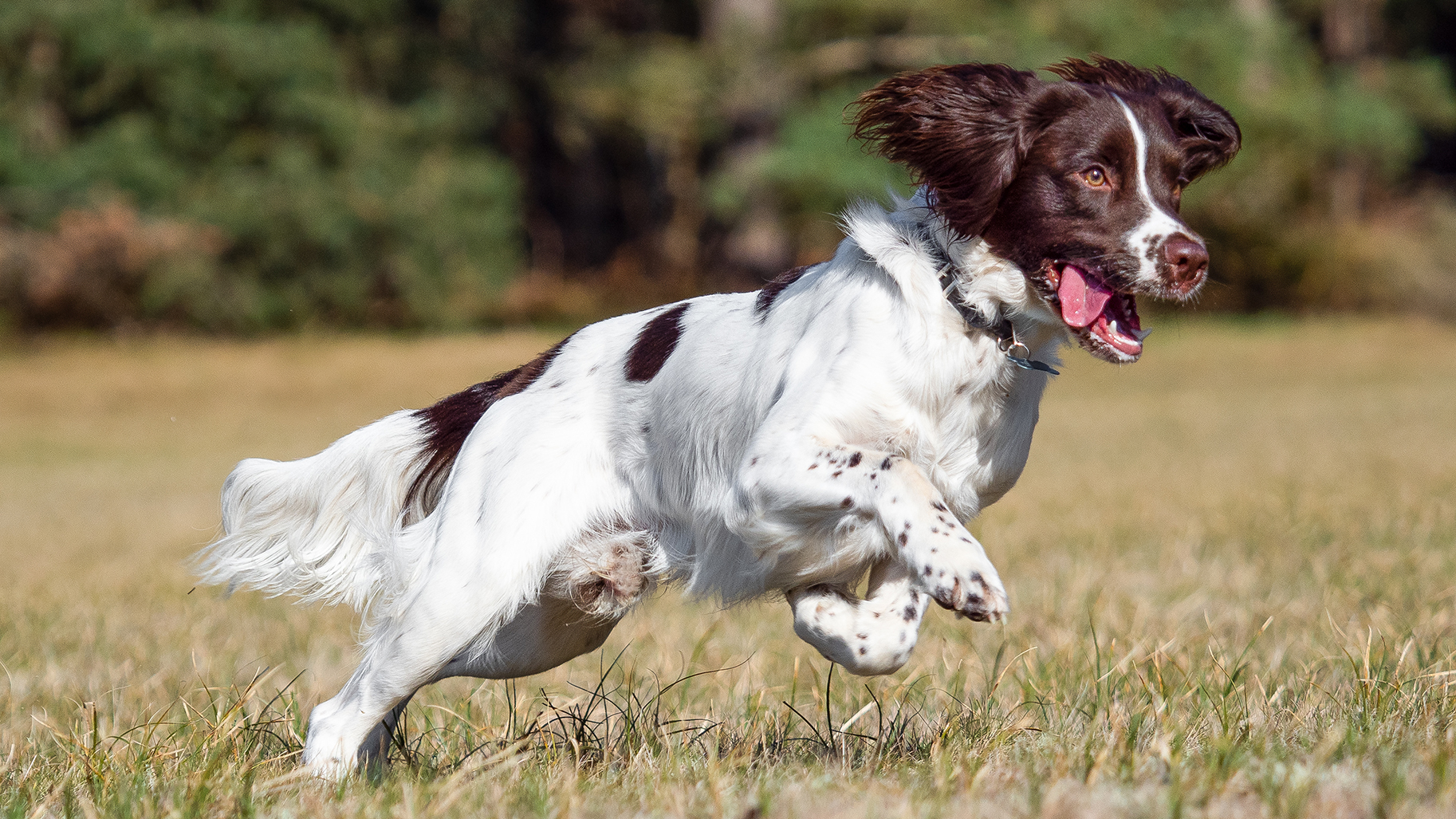
Many of us have a ‘favored breed’, and I’ve had a long and much adored string of English Springer Spaniels. I’ve always tended to have show spaniels rather than workers. They’re bigger dogs, chunkier and taller, and as they’re bred for the show ring rather than working they tend to have calmer temperaments.
Our old dog Monty, though, never got the memo that he was supposed to be less energetic, always playing with the best puppy toys right through to his senior years. He was as lively as any working spaniel, had a huge amount of joie de vivre and loved nothing better than a long walk, preferably with plenty to sniff at and jump in and over.
Around the age of eight, he was diagnosed with a rare form of squamous cell carcinoma cancer which our vet warned us would probably prove fatal. We were very fortunate in that Monty, with the support of lots of treatment and a great veterinary team, proved to be one of the 10 percent who completely recovered from the disease.
However, he did go on to develop age related arthritis, meaning joint pain in dogs is something we had to learn to manage. After all Monty had been through, we wanted to make his life as comfortable and enjoyable as possible despite the arthritis - which we did. He ended up living till the age of 13, a good age for his breed and type, and loved to go for walks right up to the end.
Arthritic issues
As he grew older, he was in very good shape for his age. Although, his arthritis did mean that he could no longer jump into the car – and he really hated being lifted up. Whenever I tried, he would wriggle like a worm and trash around with his back legs. I’d end up with muddy clothes and raw, red scratches on my arms where he’d accidentally caught me with his claws.
He’d never liked being lifted into the car even when a puppy, and he seemed to feel the indignity of it even more keenly when he could longer jump in. My husband and I had been through so much with Monty and he loved his car trips so much that we really wanted to find a solution to the problem.
Arthritis is a common problem – in fact, research in the Scientific Reports journal suggests that up to as many as 80% of dogs over the age of eight in the United States could be affected. Larger breeds tend to be more at risk than smaller pets, but it can affect any dog.
According to the experts at VCA Animal Hospitals, unfortunately, there is no ‘magic bullet’ for treating osteoarthritis. While it can’t be cured, the best way to manage it is with a combination of nutrition, anti-inflammatory and pain medication and environmental changes such as thick, padded bedding; non-slip surfaces and raised feeding bowls.

How we got our arthritic dog into the car
After scrolling through countless tips for coping with arthritis in dogs we decided to buy a dog ramp.
While we knew that dog ramps existed, an initial sweep of what was available at pet stores was disappointing. Most of what we could find only folded in half, which still meant a very large item to put in the car. If we were walking locally this wasn’t too much of a problem, but if we were off on a trip then such a large ramp would take up space we needed for suitcases. Many ramps were also heavy and unwieldy and would be difficult to handle if I were on my own.
Eventually, after many hours of internet research, we managed to track down a lightweight plastic ramp that folded into four, similar to this portable dog ramp from Amazon, $79.99. It folded up to about the size of a briefcase but was very sturdy when unfolded. We also purchased a plastic crate to stand the ramp in when not in use, so that the back seat of the car stayed clean and dry. Now, we were off and running – or were we?

Luring him onto the ramp
Initially, Monty took one look at all our careful preparations and said nope. Nada. Not one paw on that thing, thanks very much indeed. He planted himself firmly on the ground and refused even test his new ramp, which we thought tactless in the extreme!
Finally, we had a brainwave and gradually moved his bowl up the ramp as he was eating. With his head in his dinner, he didn’t realise that he was slowly moving uphill! Once he’d been up and down a couple of times he realised it was safe and now there really was no stopping him. He bounded up the ramp the second we’d upfolded it – in fact, sometimes it took some fast work by both of us to get it into position safely in time!
Disembarking, he’d wait impatiently for us to get the ramp in position then strut down it importantly, looking around to see if any other dogs were watching him. This solution worked brilliantly for the last couple of years of Monty’s life, and his ‘personal em-bark-ation system’ is now in the outhouse waiting to see if it will be needed again.
If your pooch is feeling his age a bit, then our vet has some fantastic tips for coping with arthritis in dogs.







